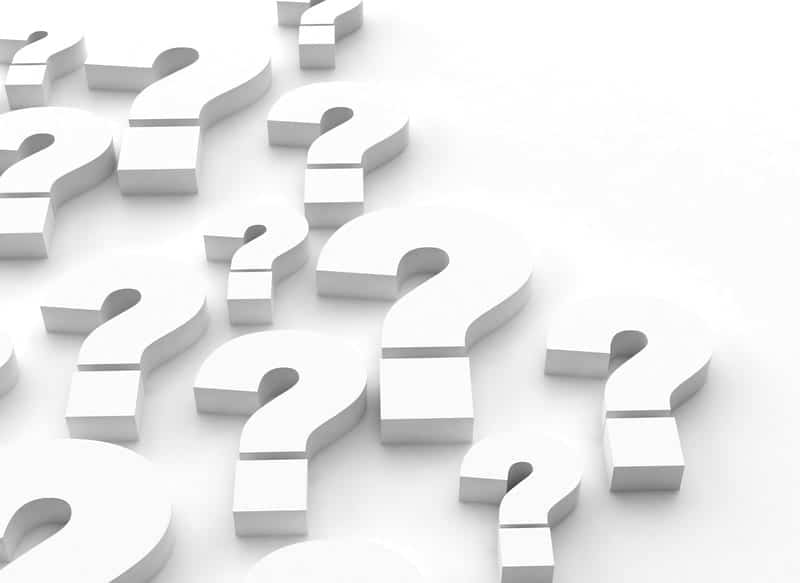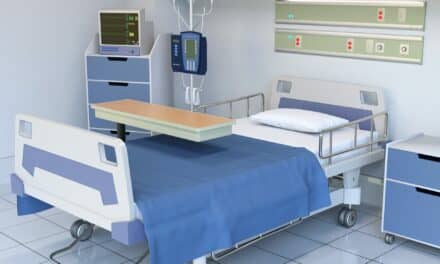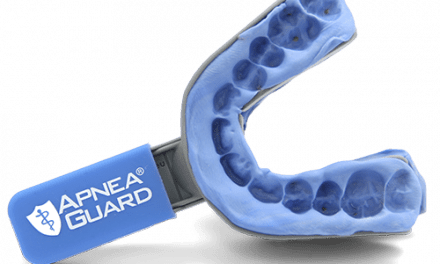The AADSM asks about the qualifications of dentists at Renew Sleep Solutions as well as raises concerns about the treatment pathway. Renew Sleep Solutions’ CEO responds.
In January, Sleep Review published an article on our website about Renew Sleep Solutions, a direct-to-consumer subsidiary of oral appliance maker Somnomed. (The article was later published in our March/April print issue.) The article garnered comments on our site and on social media and prompted the following letter from the American Academy of Dental Sleep Medicine (AADSM). Following the AADSM letter is Renew Sleep Solutions’ response, which includes information about dentist training, clinical partnerships, and other details.
Letter from the AADSM
I am writing regarding the article published in the March/April issue of Sleep Review titled “SomnoMed’s Direct-to-Consumer Channel Aims to Treat More People with Oral Appliances—Without Alienating Dentists.”
Sleep Review has a reputation for its comprehensive and excellence in reporting on complex topics related to sleep medicine. This article, however, left the reader with a number of unanswered questions.
1. Does SomnoMed require the participating dentist to possess any specific qualifications in dental sleep medicine? Dental school curriculum is strained to the point that most dental schools offer no more than an hour or two of training in dental sleep medicine. This in our opinion is not sufficient to provide patients with assurances that they will receive competent, quality, and safe care.
2. Is the participating physician required to have any specific qualifications or training to participate? Equally important, does the participating physician ever see the patient? Comorbid conditions are a serious matter and most patients suffer from one or more comorbid conditions; are they discussed with the patient? Is there direct follow-up between the diagnosing physician and the patient’s primary care physician?
It is important for dentists to recognize that those with sleep-related breathing disorders often experience negative long-term health consequences, including high blood pressure, heart disease, stroke, diabetes, and depression. Studies show a potential link between obstructive sleep apnea (OSA) and Alzheimer’s. Are we really helping patients if we address their sleep disorder, but do not encourage a collaborative relationship with their treating physician to ensure that all health issues are being addressed?
3. Does SomnoMed require Renew Sleep Solutions centers to disclose the obvious conflict of interest to the patient? We believe the patient must be advised of the relationship between the entities involved in their care. How can a patient make an informed decision without this information?
4. Are treatment options other than oral appliance therapy (OAT) offered to the patient? If so, who provides the treatment? If not, why not? Qualified dentists know not all patients are candidates for oral appliances. Further, we understand some appliances are a better match for a patient than others. Is the dentist allowed the opportunity to use the appliance that best suits the patient’s needs?
Nearly 30 million adults suffer from OSA. It is estimated that some 80% of adults with OSA are undiagnosed and up to 50% of patients diagnosed with OSA and treated with CPAP therapy are not compliant. OAT for the treatment of OSA is one of—if not the—fastest growing areas in dentistry. As the principal nonprofit professional society dedicated exclusively to the practice of dental sleep medicine, our obligation is to promote dentistry’s role in collaboration with our physician colleagues in reducing the burden of snoring and sleep apnea. We absolutely believe that dentists play an integral role in reducing the unmet burden of patients with OSA.
Poorly designed, prescribed, and delivered oral appliances expose patients to potentially life-threatening outcomes. Those responsible for treating OSA are exposed to serious medico-legal responsibility should either accident or disease lead to one of many potential morbid outcomes. It is vitally important that dentists understand the risks involved with practicing in an area they are not qualified to practice. This is also why the American Academy of Dental Sleep Medicine (AADSM) recently launched the Mastery Program, a comprehensive, standardized educational program in dental sleep medicine. Training and education are offered through the AADSM; however, our interest here is not to promote our educational opportunities. Our concern is first and foremost for the safety of the patient.
I encourage all of your readers to review two documents. The first is a recent paper titled, “Dental Sleep Medicine Standards for Screening, Treating and Managing Adults with Sleep-Related Breathing Disorders.”1 The second is a joint evidence-based clinical practice guideline by the AADSM and the American Academy of Sleep Medicine (AASM).2 Each paper clearly defines the role of dentists in managing OSA. In addition, both refer to the educational requirements a dentist must obtain to gain the requisite knowledge and qualifications to effectively treat patients.
The financial aspects reported in your article were interesting. Equally, if not more important, is whether patients treated following the Renew Sleep Solutions model are showing positive patient outcomes; perhaps it is too early for that data to be collected, but we look forward to Sleep Review’s reporting on outcomes.
Sincerely,
Harold A. Smith, DDS
AADSM president
Letter from Renew Sleep Solutions
Thank you for the opportunity of replying to the questions raised by the AADSM concerning Renew Sleep Solutions. It allows us the opportunity to dispel many of the misconceptions regarding Renew. Like the AADSM, we believe that dental devices are an important and underused treatment option for OSA. We also know there are a lot of patients who have OSA, are untreated, and that information barriers exist to them discovering dental devices as a treatment option. Renew Sleep Solutions is an important and innovative model that reaches out directly to potential patients, is patient-centered, leverages technology, and allows for close collaboration between medical and dental colleagues in a way that is not currently available in most settings.
Like the AADSM, we agree that having well-trained dentists with experience in sleep medicine is important. The premise of the AADSM question seems to suggest that the standard of care today is to have an oral device fitted by an ABDSM Diplomate. This is far from reality, and in fact many nationally prominent ABDSM Diplomates routinely teach weekend courses and actively encourage participants to start screening their own patients and treating their OSA conditions.
Renew Sleep dentists are highly motivated with years of high level dental practice, and most are on the path to becoming certified. It is important to realize that to become an American Board of Dental Sleep Medicine Diplomate takes 2 to 4 years and our oldest centers have only been operating for 18 months. In the meantime, Renew dentists have the opportunity of a structured learning program led by a Diplomate of ABDSM, as well as regular case conferences to review the more challenging cases. The number of devices fitted at each of these centers allows Renew dentists an accelerated and varied clinical experience. The ongoing organized learning opportunities combined with the focused experience in dental sleep medicine is probably unparalleled at almost any other practice.
Also, like the AADSM, we recognize there are options for treating OSA that might be better in certain circumstances. However, it is important to recognize that most of our patients come to us through direct advertising, where we are inviting people who are looking for an alternative to CPAP to contact us; so, there is clearly a built-in bias. Nonetheless, our goal is always to stay focused on the patient’s clinical presentation and offer both education and evidence-based treatment options considering patient preference. To ensure that happens, particularly for those patients who have not been diagnosed or do not have a recent diagnosis, we have recently partnered with a board-certified sleep physician group. The board-certified clinicians and nurse practitioners they employ who participate at the Renew Sleep centers lean heavily on published AASM clinical guidelines. To be clear, the clinicians who perform this service and make clinical decisions are not employed by Renew. CPAP use is strongly encouraged when indicated, and patients are educated on all treatment options. Close and collaborative relationships with local physicians and surgeons allow for many treatment pathways if a patient chooses an alternative treatment option.
Renew is now rolling out a model that has a nurse practitioner dedicated to every site. Patients are seen both in person and using telemedicine platforms. Sleep physicians supervise every aspect of care and are responsible for reading all sleep studies and clinical protocols. Trained mid-level practitioners are increasingly becoming the norm in both specialty and primary care practices and as the AADSM leadership is aware, there is strong support for using telemedicine platforms for delivering sleep consultations and management. The AASM in fact has published a position paper on this and promotes its own telemedicine platform.3 Finally, there is close real-time collaboration between the medical and dental specialists as patients move through the care pathway, which is often sorely lacking in many practice settings.
Finally, regarding oral device selection, Renew dentists do preferentially use SomnoDent devices as they have a range of device types that take care of most patients. SomnoDent devices have been used in a significant percentage of all clinical studies done to date to help forward the science of oral device therapy in OSA and their efficacy is well documented. Having said that, the practicing dentists, who are not employed by Renew, are not obligated to use SomnoDent devices and have the latitude to offer alternative devices if they believe they are indicated. Such indication is not always clear as there are very few credible head-to-head peer-reviewed clinical comparisons of different devices in the literature. Renew would encourage the AADSM to do such studies.
Again, thank you for the opportunity to address the questions raised by the AADSM.
Sincerely,
Jim Evanger
CEO, Renew Sleep Solutions Inc
References
1. Levine M, Bennett K, Cantwell M, et al. Dental Sleep Medicine Standards for Screening, Treating and Managing Adults with Sleep-Related Breathing Disorders. JDSM. 2018. Available pre-print publication at https://www.aadsm.org/docs/JDSM_-_Standard_for_Practice_DRAFT.pdf.
2. Ramar K, Dort LC, Katz SG, et al. Clinical practice guideline for the treatment of obstructive sleep apnea and snoring with oral appliance therapy: an update for 2015. J Clin Sleep Med. 2015;11(7):773–827.
3. Singh J, Badr MS, Diebert W, et al. American Academy of Sleep Medicine (AASM) Position Paper for the Use of Telemedicine for the Diagnosis and Treatment of Sleep Disorders: An American Academy of Sleep Medicine Position Paper. J Clin Sleep Med. 2015 Oct 15;11(10):1187–98.





